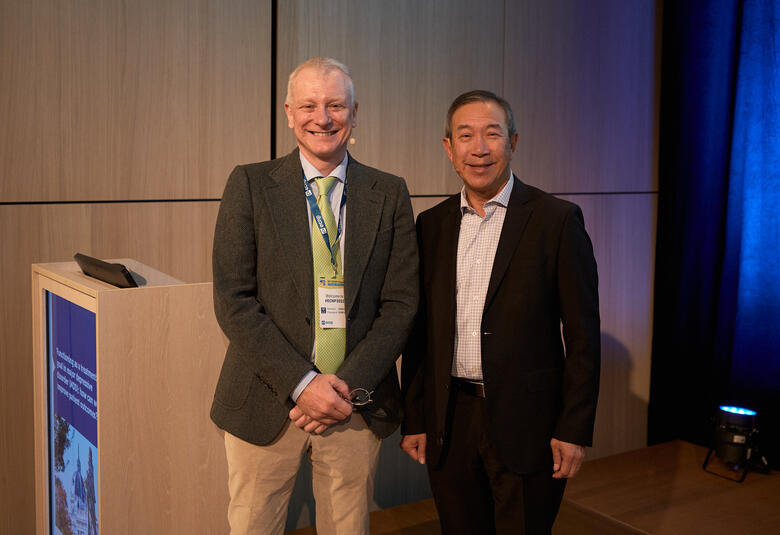Violence Against Women (VAW) is a global public health concern. The WHO estimates that about 1 in 3 of women worldwide have been subjected to physical and/or sexual violence, with the majority of this violence being intimate partner violence.1 The Declaration on the Elimination of Violence against Women issued by the United Nations General Assembly in 1993 defined VAW as “any act of gender-based violence that results in, or is likely to result in, physical, sexual or psychological harm or suffering to women, including threats of such acts, coercion or arbitrary deprivation of liberty, whether occurring in public or in private life”. VAW hinders women’s ability to fully engage with her surrounding environment, due to its inflicted physical and psychological pain on affected women and their families.2 To attend to this problem, governmental and non-governmental disciplines should work together in an integrative manner to curb VAW and support its survivors.
Leadership role of obstetrics gynecology specialists, in safe women clinics – Prof. Amr Taher
Prof. Amr Taher spoke about the Safe Women Clinic affiliated with Ain Shams University, which offers comprehensive services for women subjected to violence. He mentioned that all Safe Women Clinics adopt the definition of VAW laid down by the United Nations in 1993. The three main specialties in the clinic are: psychiatrists, forensic medicine specialists, and OBGYN specialists. He highlighted the role of the clinic in the following points:
- Attending the clinic is completely free of charge.
- The clinic not only takes care of women and girls who attend to it on their own, but also accepts those referred to it from third parties.
- Services provided to women are tailored according to their specific needs in a timely manner.
- The clinic documents the crimes committed against women in a way that ensures the privacy and confidentiality of the women’s information and details.
- The clinic has an efficient and dynamic referral system
- The clinic provides prophylactic treatments to sexually transmitted diseases.
- The clinics first-line first-aid measures (physical and psychological).
- The clinic conducts a complete physical examination and performs needed laboratory tests to violence survivors
- The clinic dealt with 48 violence survivors in 2020, and 39 cases in 2022 till date.
Challenges faced by the clinic can be summarized as follows:
- Lack of knowledge among women on the presence of the clinic
- Women are often not willing to speak about the violent acts that have been committed against them
- Lack of family support to violence survivors
Violence against women from a global and regional perspective – Prof. Gihan Elnahas
Prof. Gihan Elnahas highlighted that the first and foremost task among individuals working in the VAW realm is to raise awareness on the definition of VAW and its components against women. She mentioned that this step is paramount in strengthening women and increasing their understanding of the different situations they face. She underlined that VAW is a global rather than a national or regional public health problem. In Egypt, the rate of lifetime physical and/or sexual intimate partner violence (IPV) is 25.6%.3 Based on the reported statistics of the National Council for Women (NCW), around eight million Egyptian women are at risk of domestic violence each year, and up to 86% of wives may face spousal abuse.4 She mentioned that growing evidence suggests that IPV increases women’s risk of cardiovascular diseases including hypertension and diabetes mellitus.5 So, not only dose VAW lead to short-term physical complications such as lacerations and physical traumas, it also leads to long-term health complications.
Leadership role of forensic department in safe women clinics – Prof. Yaser Alakeed
Prof. Yaser Alakeed mentioned that the three main specialties in the clinic work in collaboration for the benefit of women. He indicated that forensic medicine specialists evaluate physical and sexual injuries sustained by abused women and provide their opinion on the estimated period of incapacity. Hence, they have a major role in generating reports to the police or judicial courts if the victim decides to sue the offender.
Our correspondent’s highlights from the symposium are meant as a fair representation of the scientific content presented. The views and opinions expressed on this page do not necessarily reflect those of Lundbeck.
1. World Health Organization. Violence Against Women. Published 2021. https://www.who.int/news-room/fact-sheets/detail/violence-against-women
2. OHCHR. Information Series on Sexual and Reproductive Health and Rights - Violence Against Women. https://www.ohchr.org/sites/default/files/Documents/Issues/Women/WRGS/S…
3. Global database on violence against women - Egypt. https://evaw-global-database.unwomen.org/en/countries/africa/egypt
4. Naguib M. Egypt: The pandemic of domestic violence. doi:https://english.ahram.org.eg/NewsContent/50/1209/419277/AlAhram-Weekly/…
5. O’Neil A, Scovelle AJ. Intimate Partner Violence perpetration and cardiovascular risk: A systematic review. Prev Med Reports. 2018;10:15-19. doi:10.1016/j.pmedr.2018.01.006




